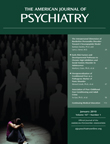Amygdala Activation During Emotion Processing of Neutral Faces in Children With Severe Mood Dysregulation Versus ADHD or Bipolar Disorder
Abstract
Objective
To understand disorder-unique and common pathophysiology, studies in multiple patient groups with overlapping symptoms are needed. Deficits in emotion processing and hyperarousal symptoms are prominent features of bipolar disorder, attention deficit hyperactivity disorder (ADHD), and severe mood dysregulation. The authors compared amygdala response during emotional and nonemotional ratings of neutral faces in youths with these disorders as well as a group of healthy comparison youths.
Method
Blood-oxygen-level-dependent (BOLD) signal in the amygdala was examined in children with bipolar disorder (N=43), ADHD (N=18), and severe mood dysregulation (N=29) and healthy comparison subjects (N=37). During functional magnetic resonance imaging (fMRI), participants attended to emotional and nonemotional aspects of neutral faces.
Results
While rating subjective fear of neutral faces, youths with ADHD demonstrated left amygdala hyperactivity relative to the other three groups, whereas youths with severe mood dysregulation demonstrated hypoactivity.
Conclusions
These findings support the role of unique neural correlates in face-emotion processing among youths with bipolar disorder, ADHD, and severe mood dysregulation.



